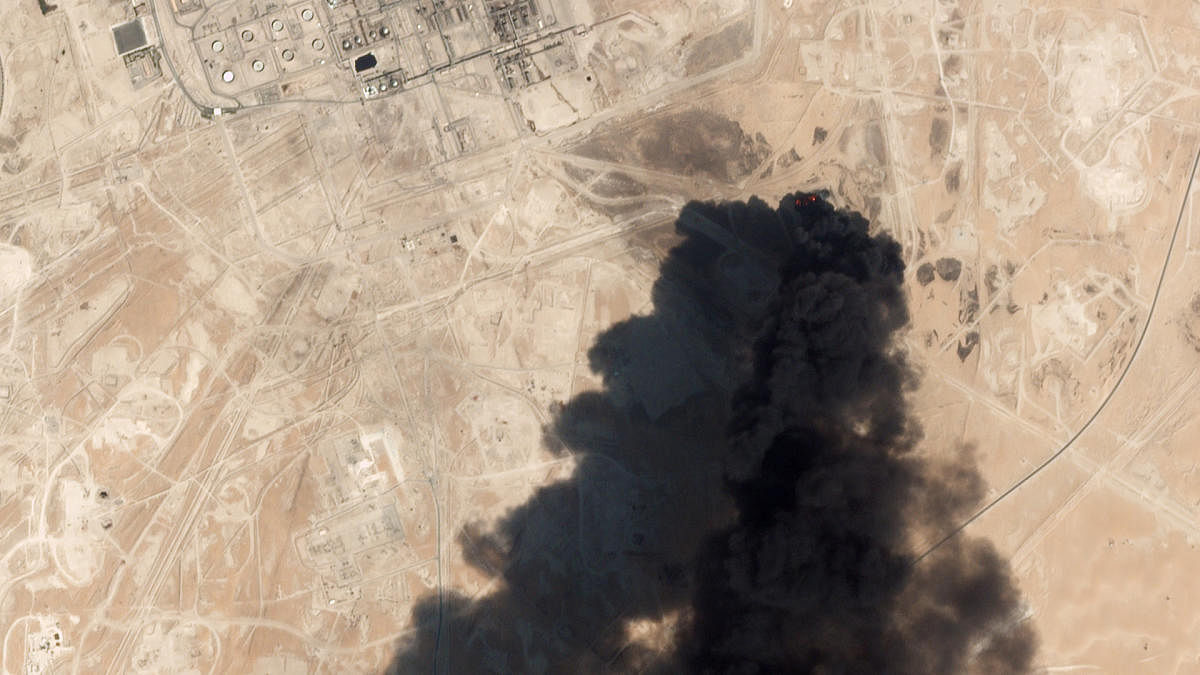
The attack on one of Saudi Arabia’s premier oil facilities, Saudi Aramco’s Abqaiq, located in the country’s eastern desert regions, has sent geopolitical jitters through not just the Middle-East, but the global economic system as well.
Visuals of the strike, reportedly conducted via drones and/or missiles, appear to show the plant on fire and the attack is reported to have led to a 5 per cent drop in global oil production. The United States was fast to point towards Iran as the culprit.
The Abqaiq attack adds a new dimension to the fast-developing crisis between the Sunni state of Saudi Arabia and Shi’ite state of Iran, a historic rivalry now playing out in a dangerously militarised landscape. The Houthis, a group backed by the Iranian state and largely active in the ensuing civil war in Yemen claimed responsibility, and this is not the first time they have targeted Saudi oil facilities.
Yemen, the poorest state in the region, has become home to a prolonged proxy war between Saudi Arabia and Iran, with missiles and other projectiles often launched into the Kingdom’s territory by the Houthis in response to a massive air operation against them by Saudi Arabia along with the UAE. However, the Houthi stronghold in Yemen is nearly 900 km away from the attack site, raising questions over the group’s claims.
Iran has faced crippling American sanctions over the past year after the US withdrew from the JCPOA agreement, bringing its oil exports to a bare minimum. This has led Tehran to intensify its proxy wars in the region, targeting Saudi, UAE and Israeli interests not only in the field of oil and economy but by propping up militias in Yemen, Syria, Iraq and strengthening the Hezbollah further in Lebanon.
This has raised the stakes for the Saudis and Israelis alike, who are by definition traditional enemies but find themselves in the same aisle regarding the threats Iran poses to their combined interests in the region.
The US was quick to blame Iran for the Abqaiq strike with President Donald Trump, as per tradition, taking to Twitter: “There is reason to believe that we know the culprit, are locked and loaded, depending on verification, but are waiting to hear from the Kingdom as to who they believe was the cause of this attack.” Interestingly, Trump put the onus on the Saudis, giving them a chance to back up the American stance that Iran was behind the attacks, and that the same originated from Iranian territory. This move was perhaps to also to prod the Saudis on, under the new leadership of Mohammed bin Salman (MBS), to reveal more skin in the game.
Riyadh, instead, balked and gave mixed signals, perhaps to avoid the prospect of direct military confrontation with Iran for now. Satellite images released post the damage in Abqaiq perhaps add to the confirmation that such a well-orchestrated, operationalised and executed the attack on the lifeline of the Saudi’s economy could not have been done by just a group such as the Houthis.
(Satellite imagery showing damage at the Abqaiq facility. Source: Strategic Sentinel)
This unfolding geopolitical crisis in the Middle East is neither new nor surprising, but its fallout on global oil prices has administered a jolt to the global economic system. A prolonged crisis in the region means prolonged uncertainty of both higher oil prices and uninterrupted supplies. The Middle East’s oil, once critical to the United States, is now more critical to developing Asian economies such as India, China, and South Korea. India imports more than 70 per cent of its crude oil supplies, a majority of which comes from the Gulf. The current tensions have pushed oil prices skywards and posed questions on the reliability of uninterrupted supplies. Along with this, an already precarious economic situation in India could face significant added stress if oil prices remain at a higher trajectory in the future.
Interestingly, Indian diplomacy has also been in the thick of things over the past few days as far as the Middle East goes. Foreign Secretary Vijay Gokhale met with his counterparts in Iran on September 15, while Minister of State V Muraleedharan arrived in Iraq to hold talks. Although these visits would have been planned from before the current crisis, it is not difficult to guess what concerns India would have raised during these consultations.
(Kabir Taneja is Associate Fellow and Head, West Asia Initiative, at the Observer Research Foundation)
The views expressed above are the author’s own. They do not necessarily reflect the views of DH.